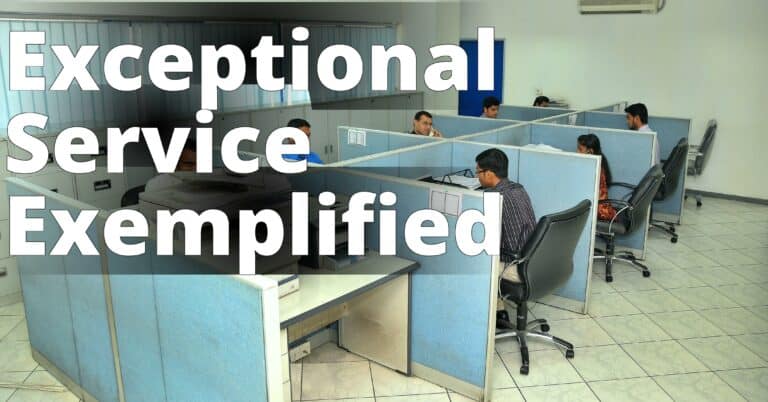Crisis Management in Customer Service: Keeping Cool Under Pressure
Effective crisis management in customer service is crucial for maintaining trust and loyalty among customers. When a crisis hits, companies are tested on their ability to handle difficult situations. Whether it’s a technical outage, product recall, or public relations stumble, the quality of the response can make the difference between a short-lived issue and long-term damage to a brand’s reputation. Smart organizations understand that having a robust crisis management plan can provide structure and guidance during chaotic times, ensuring that the customer service team knows exactly what steps to take.

Having a plan in place is not enough; it’s the execution that counts. During a crisis, customers look for prompt answers and reassurance that their concerns are being addressed. This means that the customer service team is often on the frontline, managing high call volumes and communicating through various channels. A good crisis response not only resolves the immediate issues but also demonstrates empathy and a commitment to the customer’s experience. This commitment can result in strengthening customer trust, even after the crisis is resolved.
Therefore, the way an organization handles a crisis in customer service is not just about managing a problem, but also an opportunity to reinforce the company’s values and highlight the efficiency of its customer support. A well-managed crisis can showcase an organization’s reliability, responsiveness, and dedication to its clientele, turning a challenging situation into a testament to the company’s customer-centric approach.
Understanding Crisis Management
In customer service, crisis management is vital for maintaining trust and stability. It centers on identifying and addressing unexpected negative events that can impact a company and its stakeholders.
Types of Crises
Crises in the context of customer service are diverse and often require distinct management strategies. Some common types of crises include:
- Natural disasters: Events like earthquakes or floods that can disrupt service and supply chains.
- Organizational crises: Issues internal to a company such as data breaches or major staff turnovers affecting service quality.
- Public relations crises: Situations where a company’s reputation is at risk, impacting customer trust.
Each type of crisis demands a tailored response plan to mitigate damage and navigate towards resolution.
Principles of Crisis Management
Effective crisis management is underpinned by several key principles:
- Preparation: Anticipating potential crises and having a preparedness plan is essential.
- Communication: Transparent and timely communication can help maintain customer relationships during a crisis.
- Response: A swift and effective response plan should be activated to address the crisis head-on.
By adhering to these principles, organizations can better manage crises and limit their negative impact on customer service.
Formulating a Crisis Management Plan
Crafting a solid crisis management plan requires forethought and detail-oriented planning. It ensures companies are ready to act swiftly and competently when emergencies arise. Let’s break it down into its core components and discuss emergency preparedness.
Components of a Plan
A robust crisis management plan is built around several key components that management should outline to address potential emergencies adequately.
-
Identification of Potential Crises: Before anything else, pinpointing what types of emergencies could happen is crucial. This includes natural disasters, data breaches, or any situation that threatens operations or safety.
-
Crisis Leadership Team: Determining who will lead in times of crisis is vital. This team devises the plan of action and delegates responsibilities.
-
Communication Strategies: Clear and timely communication to stakeholders, along with providing reliable points of contact, is essential in proactive crisis management.
-
Response Procedures: Documented steps and protocols ensure everyone knows what actions to take, reducing confusion and promoting efficiency.
-
Resource Allocation: Management must ascertain the resources, like backup systems and emergency funds, that are accessible for crisis response.
Emergency Preparedness
Being ready for an emergency involves more than just having a plan; it involves a culture that prioritizes proactive crisis management.
-
Training and Drills: Regularly scheduled drills get staff familiar with the plan, helping them to respond instinctively when needed.
-
Resource Assessment: Continuous reviewing of the resources at hand ensures that they are adequate and functional at all times.
-
Review and Updates: Ongoing assessment of the crisis management plan itself, adapting it as the organization and potential threats evolve.
Building these aspects into a crisis management framework helps organizations to be well-prepared and resilient in the face of an emergency.
Setting Up a Crisis Management Team
In the event of a crisis, a Crisis Management Team (CMT) is pivotal to steer an organization through turmoil. It’s essential that the team comprises individuals with clearly defined roles and responsibilities, as well as a strategy for cross-training to ensure resilience and adaptability.
Roles and Responsibilities
Key personnel make up the crisis management team, each with specific duties. It is imperative to chart these out:
- Crisis Leader: Takes charge of the situation and makes critical decisions.
- Communications Coordinator: Manages all communication inside and outside the company.
- HR Advisor: Oversees employee well-being and disseminates information to the workforce.
- Legal Advisor: Provides guidance on legal considerations and implications.
- Technical Expert(s): Offers insight into technical challenges and solutions.
- Logistics Coordinator: Ensures resources are available and manages their distribution.
Each role must have a designated backup, and all team members need to be aware of their counterparts to maintain the flow during a crisis.
Cross-Training and Development
For a crisis management team to be effective, members need to be proficient in their areas and have a working knowledge of other roles. Here’s how cross-training should be approached:
- Regular Training Sessions: Organize workshops where team members learn about different aspects of managing a crisis.
- Simulation Drills: Conduct mock crisis scenarios to put training into practice.
- Knowledge Sharing: Encourage sharing of insights and experiences among the team.
This helps ensure that if one member is unavailable, others can step in without causing a breakdown in the response efforts. It also fosters a more cohesive and cooperative environment among the team and stakeholders involved.
Proactive Communication Strategies

In customer service, being one step ahead is crucial. Proactive communication strategies involve reaching out to customers before they encounter issues, utilizing various channels to provide consistent support and information.
Utilizing Social Media
Social media offers an immediate platform for customer service teams to engage with clientele. They can disseminate information rapidly during crises, affecting client perception positively. For example, announcing updates via Twitter or providing safety tips on Facebook can alleviate customer concerns. It’s not just about pushing out information; it’s also crucial for monitoring customer sentiment and responding proactively to developing situations.
Developing an Omnichannel Approach
An omnichannel approach integrates various communication avenues such as email, phone, and messaging apps to deliver a seamless customer experience. By ensuring that the message remains consistent across all platforms, businesses can enhance the efficiency of their crisis resolution. This method also makes sure customers can receive support through their preferred channels, whether it’s a phone call for immediate assistance or an email for detailed enquiries.
Customer Service During a Crisis

In times of crisis, such as the COVID-19 pandemic, businesses face unique challenges in maintaining customer service standards. Customers expect transparency, prompt support, and consistent quality, which can profoundly affect customer loyalty and trust.
Managing Customer Expectations
Customers’ need for information and support often intensifies during a crisis. Communication becomes crucial; it’s essential to provide customers with frequent updates about the situation and how it affects the services they rely on. The customer service team should be prepared to manage a higher volume of enquiries while setting clear and realistic expectations. For example, during the COVID-19 pandemic, teams made it a priority to keep customers informed about delays and changes in operations.
Maintaining High-Quality Service
Maintaining the quality of customer support is non-negotiable, even in a crisis. Teams must adapt quickly to ensure the customer experience doesn’t suffer. This might include:
- Training staff on new protocols to handle the crisis effectively.
- Implementing remote work solutions to keep the customer support team functioning, even if they can’t be in the office.
- Utilizing technology, like chatbots or automated response systems, to ensure prompt service.
For instance, during the pandemic, many companies had to swiftly transition to remote work setups, ensuring their customer service could continue uninterrupted. This transition helped maintain the trust customers have in their commitment to high-quality service.
Internal Operations and Workflow

Effective crisis management in customer service hinges on streamlined internal operations and an adaptable workflow. These elements are crucial for maintaining productivity despite disruptions like supply chain issues or technology failures. Let’s dive into how business continuity planning and the shift to remote work can be managed effectively.
Business Continuity Planning
Business continuity planning (BCP) ensures that a company’s operations can continue during a crisis. In customer service, they prioritize key functions and establish protocols to prevent service interruption. For instance, a solid BCP would address potential supply chain disruptions head-on, with strategies for immediate action steps such as sourcing alternative suppliers or leveraging inventory.
Adjusting to Remote Work
Adjusting to remote work poses unique challenges for maintaining workflow and productivity levels. Companies must equip their teams with reliable technology and clear guidelines to combat potential technology failures. They typically implement robust communication tools and cybersecurity measures to create a seamless remote working environment, which helps in sustaining the workflow and keeping operations smooth.
Financial and Reputation Management

When it comes to crisis management in customer service, a company’s financial stability and reputation are tightly interwoven. Quick and transparent actions can protect both the bottom line and public perception.
Safeguarding Finances
In crisis scenarios, companies should have a clear strategy to protect their revenues and profitability. Effective crisis management can prevent financial losses by minimizing disruptions to operations and preserving customer trust. It’s essential they have a crisis communications plan to immediately address any financial concerns to stakeholders and reassure them that the crisis is being managed effectively.
- Immediate Response: Initiate an immediate freeze on non-essential spending to conserve resources.
- Financial Assessment: Analyze the potential financial impact and adjust forecasts and budgets accordingly.
- Customer Retention: Use open communication to keep customers informed, aiming to retain their business and minimize revenue loss.
Public Relations Efforts
Public Relations (PR) teams are on the frontlines of protecting a company’s reputation during a crisis. They craft the messages that will shape public opinion and, by extension, the company’s future. Transparent and timely communication is key here.
- Develop Key Messages: PR should prepare clear messages that address the situation without legal jargon or corporate speak.
- Media Relations: Manage media inquiries with consistent messaging and control the narrative to prevent misinformation.
- Update Regularly: Keep the public informed with regular updates on the situation and how it’s being handled.
Dealing with Customer Service Failures

Dealing with customer service failures is about swift recovery and turning negative experiences into opportunities for improvement. Customers appreciate transparency and sincerity, so acknowledging the issue and demonstrating empathy are vital steps towards resolution.
Effective Escalation Processes
When a customer service failure occurs, having an effective escalation process is crucial. Companies should ensure that all customer service agents are trained on when and how to escalate a concern. For example:
- Immediate Escalation: If a customer’s issue is complex or beyond the agent’s scope, it should be escalated immediately to someone with the right expertise.
- Empathetic Acknowledgement: During escalation, express empathy and apologize for the inconvenience.
This strategy helps in not only resolving the issue efficiently but also in maintaining customer satisfaction.
Learning from Mistakes
Every customer service failure presents an opportunity to learn and improve. Here’s a simple framework to integrate learning from mistakes:
- Acknowledgment: Recognize the error openly and commit to addressing it.
- Analysis: Determine the root cause of the issue to prevent future occurrences.
- Action: Implement changes based on the analysis to improve the service.
By systematically learning from errors, businesses can move towards recovery and enhance their overall customer service experience.
Post-Crisis Evaluation and Adaptation

In the wake of a crisis, it’s crucial for customer service leaders to dive into a thorough post-crisis evaluation, harnessing concrete metrics to steer recovery and future preparation. This ensures customer trust is rebuilt and that the service team grows wiser from the experience.
Analyzing Critical Metrics
After the dust settles, they shift their focus to critical metrics. This isn’t just about response times or resolution rates; they scrutinize everything from customer feedback to service disruption durations. Specifically, they’ll want to examine:
- Customer Satisfaction Scores: Have these dipped due to the crisis?
- Response Time: Was the team responsive enough during high-pressure moments?
- Resolution Rate: How effectively were customer issues resolved?
It’s more than a numbers game—they’re gleaning insights to fortify their knowledge base and refine their guidelines for crisis management.
Continuous Improvement Cycle
The path to betterment is cyclical. Once they’ve picked apart the metrics, they embrace a continuous improvement cycle:
- Assess: They establish what went right and where they faltered.
- Plan: Developing targeted action plans based on their findings.
- Implement: Putting those plans into motion—whether it involves training staff or updating protocols.
- Review: Then, they circle back, analyzing the impact of the changes made.
This loop keeps them prepared, always learning, and ever-resilient, ensuring a sturdier safety net for customer trust.
Real-world Scenarios and Case Studies

In this section, we explore specific instances where companies faced challenging situations and the varied approaches they took in response. We’ll examine both the successful strategies and those that fell short.
Dissecting Success and Failure
Hurricane Katrina’s Aftermath: A devastating natural disaster, Hurricane Katrina brought to light the critical importance of having a robust crisis management document. The event showed that failures in preparation and response can lead to catastrophic outcomes, including extensive property damage and the tragic loss of over 1,800 lives.
- United Airlines’ Customer Incident: A customer interaction turned into a public relations nightmare for United Airlines. When a passenger was forcibly removed from an overbooked flight, the incident sparked outrage and highlighted the necessity for better crisis handling methods in disruptions and cancellations.
Strategies in Action
Starbucks’ Quick Thinking: Faced with a significant adverse event, Starbucks demonstrated effective crisis management following an incident that threatened their inclusive brand image. They took swift action, showing that a proactive approach can help manage and mitigate a crisis.
- KFC’s Supply Chain Crisis: A supply chain disruption led to a massive product recall for KFC, with a shortage of chicken causing widespread store closures. KFC’s humorous and transparent response to the crisis helped maintain customer goodwill despite the cancellations.
By examining these case studies closely, companies can learn valuable lessons in crisis management and the importance of maintaining effective customer interactions during difficult times.
Frequently Asked Questions

In navigating a customer service crisis, it’s essential to understand the strategies, benefits, and components that make up effective crisis management. Here, we explore some of the most pressing questions regarding handling such situations.
How do you handle a customer service crisis?
When a crisis hits, it’s crucial for customer service teams to respond quickly and efficiently. An effective method is having a crisis management plan in place that focuses on rapid response, transparent communication, and empathy with the affected customers.
Can you give examples where crisis management improved customer service?
Yes, companies that promptly address a crisis by transparently communicating with customers and taking responsibility often see improved trust and loyalty. For example, a business that activates a well-prepared customer service team to manage a product recall can turn a negative situation into a display of reliability and dedication to customer safety.
Why is crisis management vital for customer satisfaction?
Crisis management is vital because it demonstrates a company’s commitment to its clients. Handling a crisis well shows that the company values customer well-being and is willing to go the extra mile to resolve problems, thereby fostering customer trust and satisfaction.
What are some effective crisis communication strategies for service teams?
Effective strategies include maintaining open lines of communication with customers, providing regular updates, and being transparent about the crisis’s impact. It’s also beneficial to empower support agents with the information and authority to solve customer issues directly.
What should be included in a crisis management plan for a customer support team?
A robust crisis management plan should define what constitutes a crisis for the organization, establish protocols for communication, identify key personnel for the crisis management team, and detail the steps for post-crisis follow-up and analysis.
How do the 4 C’s apply to managing customer service crises?
The 4 C’s—competence, confidence, compassion, and communication—are essential in managing customer service crises. They guide service teams to handle problems effectively, reassure customers, show empathy, and keep customers informed throughout the crisis resolution process.





